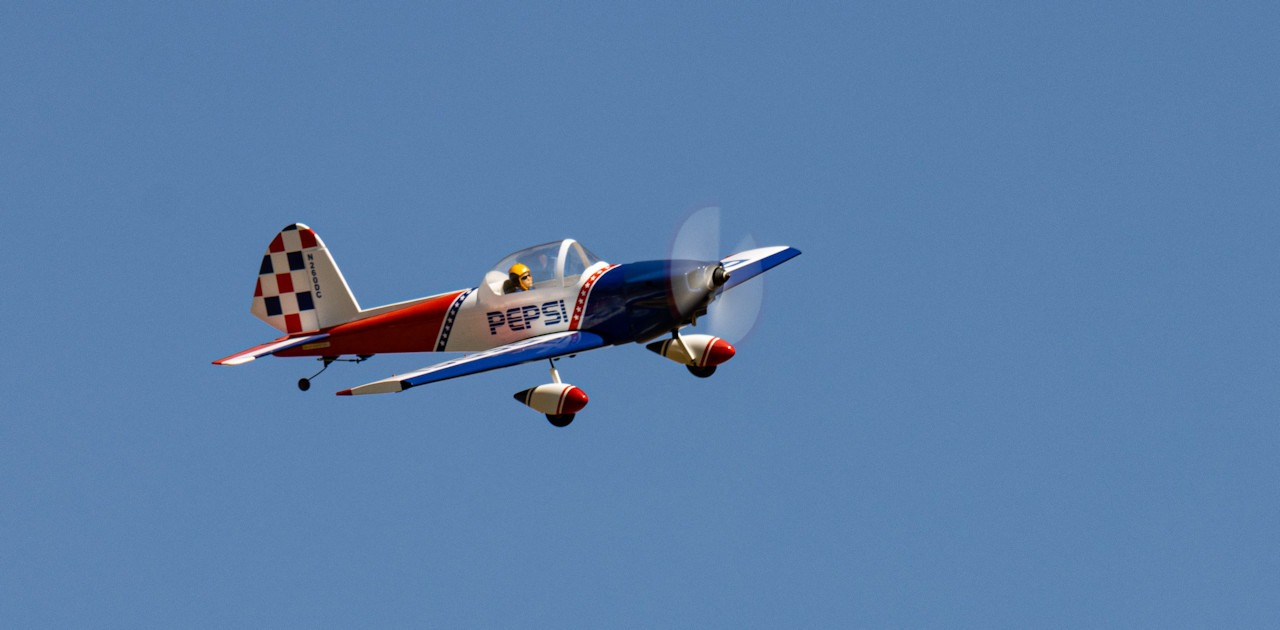Wimborne Model Aero Club holds many activities and events through out the year at our Cashmoor flying site and also our Club Nights. These events and activities are notified by Newsletter to club members or are posted on the Discussion Board in the relevant forums. Events and competitions at Cashmoor throughout the Spring Summer seasons cover all types of fixed wing flight.
Social Club Events. We also hold events not necessarily connected to RC flying. Guest speakers from specialist areas of the aircraft industry, RC models, Social evenings and RC flight simulator evenings the latter normally on Club nights.
Charitable Events. Several times a year we support local charities and school fairs free of charge as an aid to the local Community by putting on Static Displays of models, construction techniques and a RC Flight Simulator. The Flight Sim gives the event's visitors the chance to fly an RC model on a large screen TV, the latter very popular with children and adults alike. This also helps promote RC flight in general as a pastime and sport and to encourage the younger generation to get involved thus enabling the hobby to continue into the future.
Content: scale model gliding jet turbine electric ducted fan aerobatics
Scale Model
We will probably never be able to fly the real thing but scale aero models will get us somewhere close with satisfaction. Picture above looks like the real thing or is it? Or it is a scaled down version of the real thing. Scale or true scale? True scale is very intensive modelling so generally for RC scale models "stand-off" will suffice. Stand-off is from about 5 meters but we won't hold you to it!
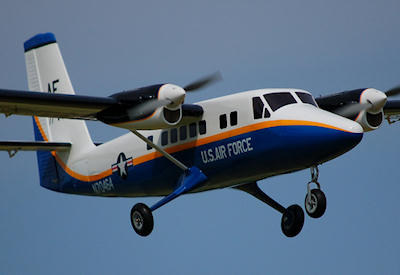 There are lot's of ARF scale models to chose from, some better than others, thanks in some part to the Chinese although the designing may be made by top aero modellers. Picture right is a DHC Twin Otter (STOL) as used by the US Army Parachute Team.
There are lot's of ARF scale models to chose from, some better than others, thanks in some part to the Chinese although the designing may be made by top aero modellers. Picture right is a DHC Twin Otter (STOL) as used by the US Army Parachute Team.
With scale models you can be piloting whatever you want - favourites are Spitfire, Mustang, P40 pilot. Once these models are in the air, some having more presence than others, they appear to be the real thing. They will have similar flying characteristics to their full size counterparts but usually the designer will make some changes to make the aircraft easier or more stable to fly.
This may entail changing wing washout or modifying the wing profile. Cowlings may be extended to get balance and landing gear may not always be correct but we don't always quibble over it.
Although flight is likely to be very similar to the full size, take-offs and landings will need a lot more care with these models. Roll outs can be greatly assisted by using the flaps but landing does need extra care. Scale models don't like hard landings especially those with retractable wheel gear. So, a good approach, glide path and gentle touchdown is recommended.
Open Scale Days are held at least once a year. See the Photo Gallery
Gliding and Slope Soaring
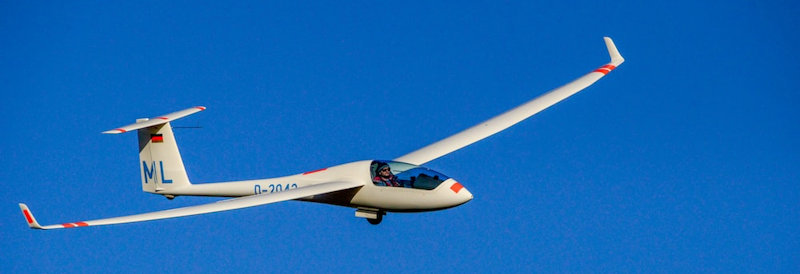
Gliding generally deemed as silent flight using just the wind and/or thermals to keep the craft in the sky. A truly fascinating side to RC flight with many people just taking up this type of flying only.
Depending on your geographical position or flying site the use of electrically assisted climb up is becoming very popular, especially now with the advent of powerful, light brushless inrunner, outrunner motors, although some classes still specify standard brushed motors.
Without power asssitance to climb up the alternatives are off a windy slope (soaring), bungee launch and the aero to(towline) by a large, powerful aircraft. The glider once up to height releases itself from the tow hook and seeks thermals to stay aloft.
Wimborne Model Flying club has lot's of experienced pilots to this hobby with years of flight without engines. A slightly different skill required here from powered flight - no power out of a problem - you have to fly it out! Maybe that's the fun of it!
Too windy for general power flying? Not a problem for WMAC members because it's off to the hills of Dorset for some fun. Because this relys on the right weather, being always changeable the Forum updates with latest information.
All year round we fly on the slopes when the weather permits or is suitable. However, even in high Summer the conditions can change suddenly therefore always come prepared with waterproof coat or jacket, hat and a waterproof bag to protect your transmitter. Drinks too, hot or cold to stave off dehydration. All year round sport from dawn to dusk. All we ask for is a favourable wind of over 13 mph.
Join the Club and join us on the slopes.
Jet Turbine
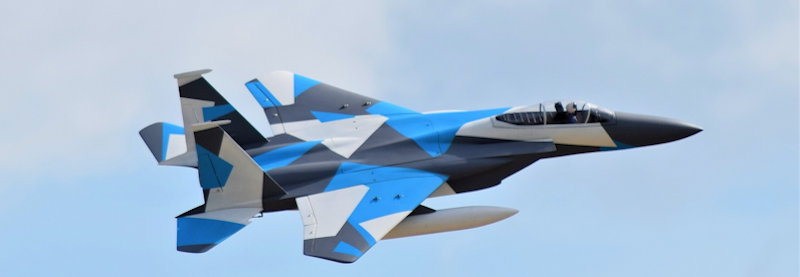
For many people the turbine powered jet needs a deep pocket and also the experience of many hours of RC flying. Although airframes have come down somewhat in price and vary between traditional balsa - ply construction and the more popular composite construction, the latter strong but light.
A few of our members have turbine powered jets and attract a lot of attention when they are present up at Cashmoor. The smell of kerosene or parafin mixed with turbo oil) and the whine of a turbine is something to enjoy.
Turbine power requires a lot of avionics on board to enable the model to fly. Safety devices to cut off the highly imflammable fuel or an onboard fire. Pumps and regulators all add to the expense and that is not including the fuel which is burnt at an alarming rate. A gallon doesn't last long but that 8 - 10 minute flight is something to behold and enjoy. An adrenalin rush to appreciate!
EDF - electric ducted fan
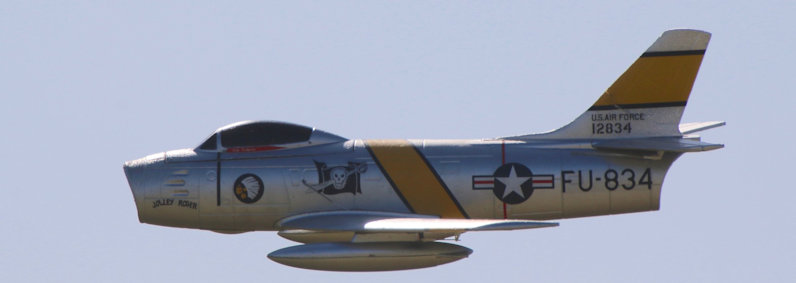
Meanwhile, coming back to something more afforable for the masses is the EDF jet. All shapes and sizes and able to be flown by less experienced pilots and tend to survive some crashes some of the time. More likely to be able to repair this type of model. Afforable they are too! Pictured right is an EDF model of the Breitling Display Team
Composite fibre scale models are very light and although they started life at the Turbine end of the market as EDF fans became more efficient and powerful they were also became popular. Power to weight ratio was much improved and therefore they would be able fly like a jet should, including vertical climbs.
Made from EPP or EPO foam (expanded plastic) and powered by the screaming EDF power plant. EDF = Electric Ducted Fan). The small but powerful motors in these units will be rotating the fan at speeds of 20,000rpm up to 48,000 rpm and drawing high amounts of current from the battery pack, typically LiPo (Lithium Polymer).
These lightweight EDF models will come in ready to fly (PNP), almost ready to fly(ARF) versions at very reasonable prices and therefore virtually all can be Top Gun pilots. Average prices from £100 upwards depending on size and the amount of build already done. EDF fan sizes start 50mm to 120mm. Popular though are the fans in the 64mm to 80mm.
Aerobatics
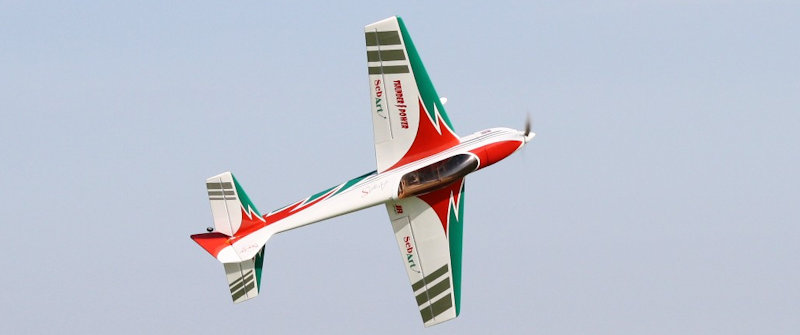
Aerobatics your preference? Love to watch? Do you wish to get involved in high level aerobatic competitions like IMAC? Extreme 3D? Many of our members are into aerobatic flying. From small foamie models to giant scale gasoline powered scale models. Starting off with a 60 size aerobatic model is the normal jumping in point.
Sixty size are not too expensive and can be glow or electric powered. Practising manouevres will always be a little terrifying at first and there will be heart-stopping moments and possible crashes. You have to expect it at some time of other!
Inverted flight, stall turns, inside and outside loops (bunts), snap rolls, flat spins and much more are very eyecatching and great fun to watch and achieve. The aerobatic models are designed to withstand high G forces and with wings generally centrally mounted and large control surfaces, the manouevres are easier to achieve and helped with power to weight ratios much more than standard sport models.
Many of our members own these aerobatic models, some are scale versions of the full size aircraft and powered by powerful electric brushless motors, large glow motors and top of the shop two stroke petrol single and twin cylinder power too. Petrol power starts from a meagre 20cc, 50cc up to 150cc and beyond.
Members with large scale gas powered models enter into competitions such as the IMAC competitions. The latter are precise aerobatic flght patterns but also include freestyle flying which is done to music if you so wish. There are multiple judges in IMAC awarding or deducting points on all manouevres after take-off.
Or for weekend sport flyers you can gain much pleasure from just throwing it around the sky for fun and adrenalin rush!

